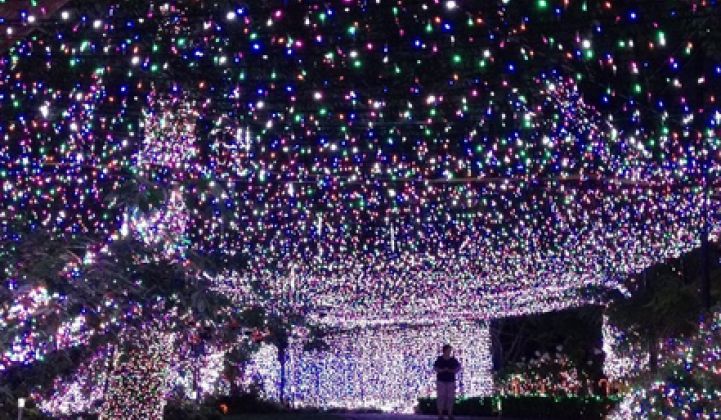While the rest of us were busy stringing lights on our homes, several leading utilities, cities and LED companies were taking on larger tasks.
Here are a few of the top LED projects of 2013.
A Distribution Warehouse
Earlier this year, PG&E installed 102 LED luminaires from Digital Lumens in a 44,800-square-foot warehouse space. Seeking to determine the potential energy savings from an LED retrofit, the utility tested various scenarios, including a granular approach to monitoring the lights. The result: a stunning 93 percent drop in the system’s energy consumption.
A Metro System
The Washington Metropolitan Area Transit Authority is upgrading over 13,000 lighting fixtures in 25 parking facilities. The new LED lighting will deliver energy efficiency at no upfront cost: WMATA will pay for the project through its $2 million annual savings and a maintenance contract with provider Philips Electronics. The initiative is the first of its kind for Philips, which plans to build on the lighting-as-a-service idea. “This is our model moving forward,” said William McShane, director of sales for the sustainable lighting division at Philips Electronics North America.
A City
As Katherine Tweed wrote earlier this year, cities are flocking to LED street lights, and the list of efficiency-minded municipalities continues to grow. While Los Angeles, Las Vegas, Seattle, and Austin have already invested, Boston recently made headlines with a smart city project that aims to process data from 64,000 streetlights and 850 traffic lights. The latest high-profile announcement comes from across the ocean, where Copenhagen is preparing to network 20,000 street lights next year. And the dropping price of LED replacements for city lights is only becoming more attractive to municipalities, having hit the $99 mark in August.
The Global Lighting Market
After LED company Cree introduced a warm white bulb for less than $10, it didn’t take long for lighting incumbents to answer with competing consumer LED offerings. But these skirmishes in the price war shouldn't divert attention from the broader battle for the LED industry’s share in the global lighting market. Executives past and present at Philips Lighting see a path to 80 percent market share for LEDs, citing disruptive companies like new entrant Cree. And as the focus of innovation broadens from the technology of the fixtures to further downstream, both Philips and Cree are working on ways to simplify the upgrade process for potential customers.
These are ambitious projects that will tap a huge pool of energy and cost savings. Still, if there’s one residential lighting project that can compete with the above list, it’s the record-breaking Christmas display of 502,165 LED lights on the property of David and Janean Richards.



